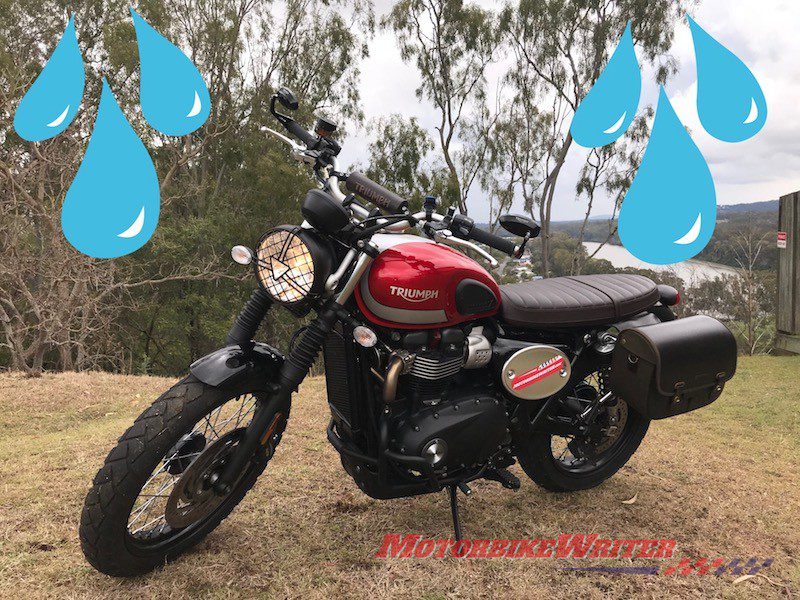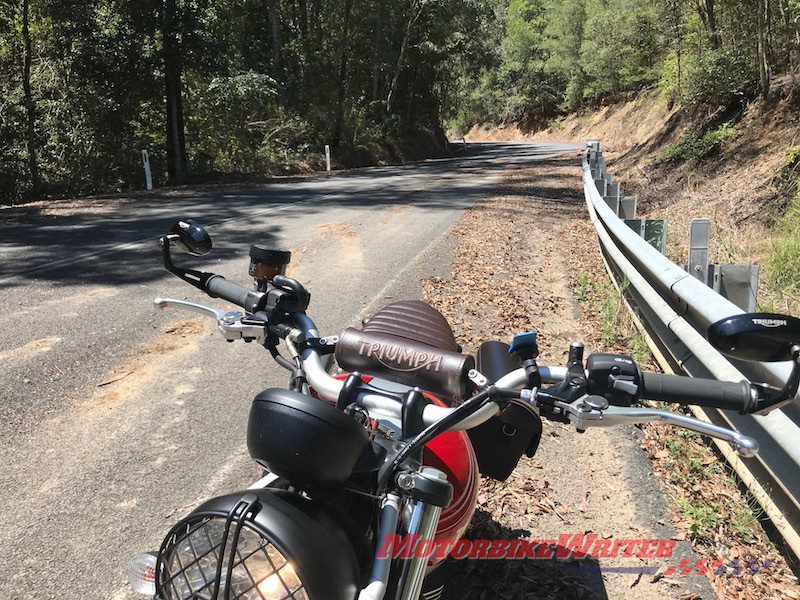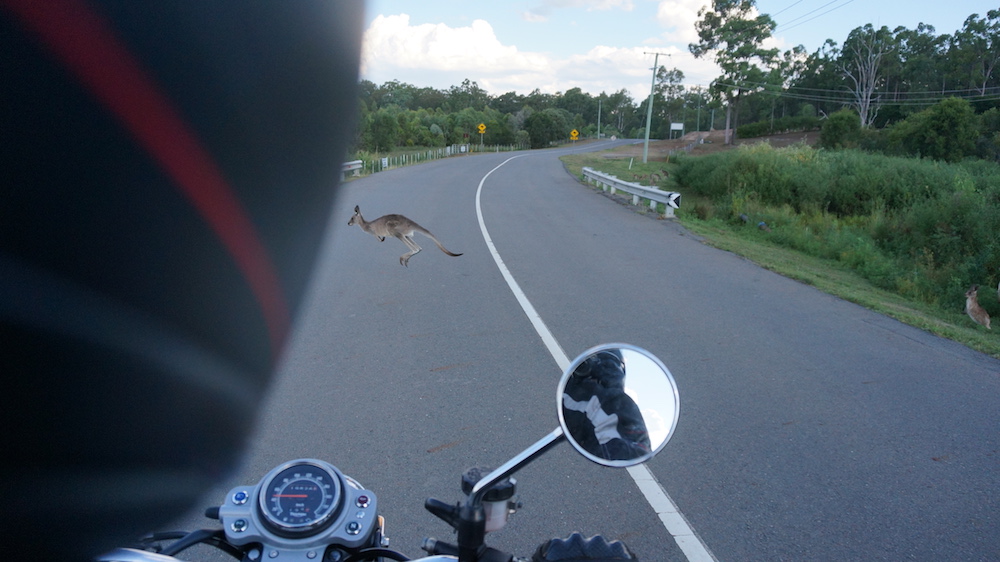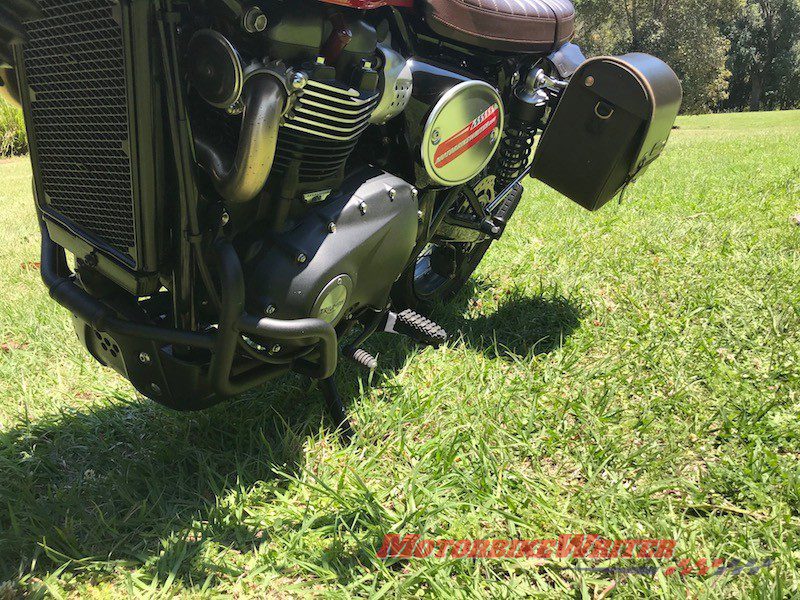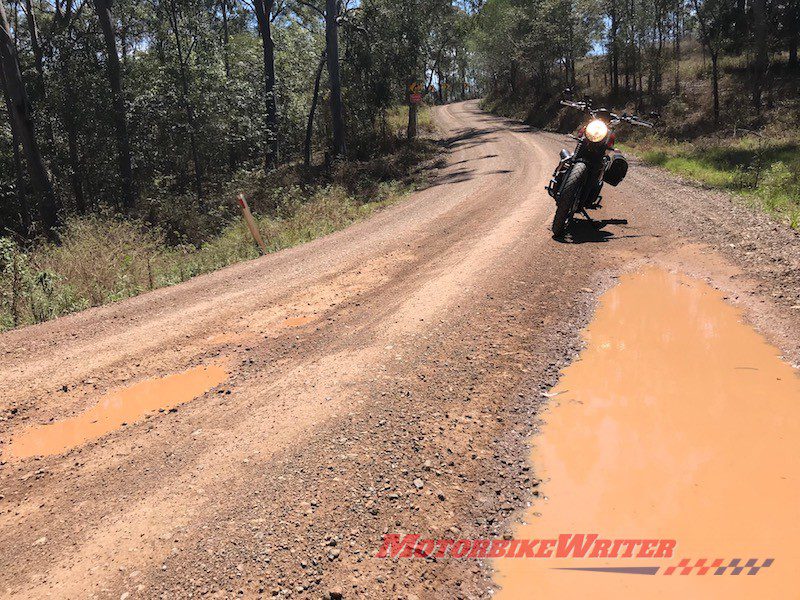Riders tend to be more cautious when it’s wet, but after heavy rain has dried, there are still many road hazards of which riders should be aware and cautious.
We have come up with 10 hazards on sealed and unsealed roads that are unique to road conditions after rain, especially following a long dry spell as we’ve experienced.
The best advice for handling these is to anticipate, slow down and develop your emergency braking and avoidance skills.
10 hazards
- Over-confidence: After rain there may be good reason for improved confidence. Rain can clean roads of slippery oil and grime, while a short summer storm can cool the surface and improve grip when it has dried. But over-confidence can be a real danger for any rider, either on tarmac or dirt roads.
- Gravel: Rain can wash a road clean and also wash gravel on to the road. This can be a real issue on downhill blind corners where you can’t see the debris scattered across the road.
debris washed across downhill blind corner - Wet patches: Dry roads can still have some wet patches that are prolonged by the shade of trees which can also obscure the patches from a rider’s view.
- Animals: Wildlife favour the roadside for the “green pick” which is the succulent new growth that springs up after rain. It grows more lush at the roadside because of the runoff from both tarmac and crowned dirt roads.
- Gravel driveways: Be aware when passing driveways. Some can be made of gravel that has been washed across the road.
- Soggy ground: Be careful when parking your bike on grass after rain as it could be soggy underneath and your side stand may sink.
Stand sinks in soft ground - Ruts: Dirt roads can turn to rivers in the rain and water will gouge deep ruts either across the road or in the same direction as your wheels. Both cause issues with stability and can be hidden around downhill blind corners.
- Mud pools: Pools of water are fun to splash through, but be aware they could be covering rocks or other hazards. Also four-wheeled traffic coming the other way will often drive around these puddles and come across your side of the road.
Ruts and puddles can be dangerous - Clay: Not all dirt has the same grip when wet or drying out. Crushed granite can actually have more grip when wet and volcanic red soil can dry to a concrete consistency. However, grip levels can change rapidly as the surface dries or heavy vehicles pummel the road back to gravel and dust. Also, be aware that clay can quickly dry to a thin crust. Don’t be deceived! Underneath it can still be a gooey trap for motorcycles.
- Water crossings: Just because the rain has gone does not mean water crossings are safe. It can take hours and days for water to flow down to the water crossing. It will also be flowing faster than normal which can cause disaster, especially if the bottom is slimy moss.
Oh-oh … slime underneath!


